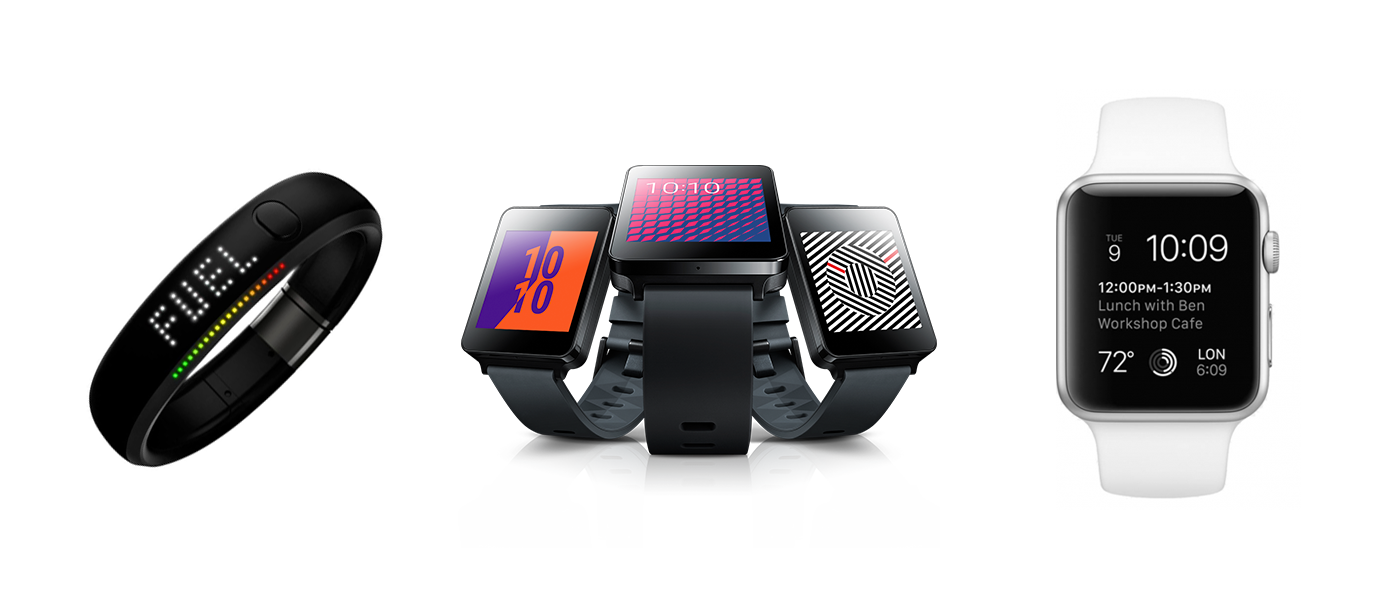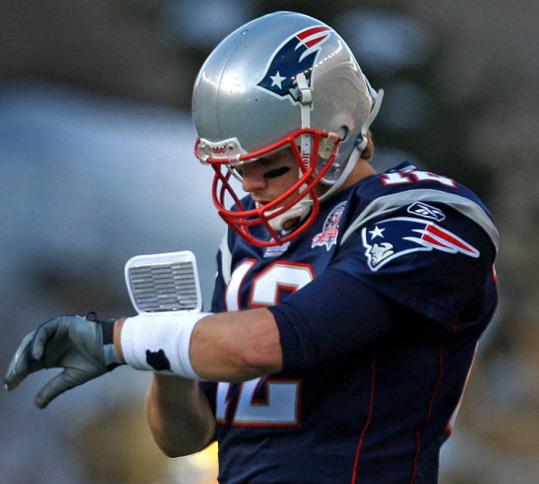Google Wear and the Apple Watch have added more fuel to the fire of buzz around ‘wearable technology’. So, beyond the hype and generalities of ‘wearables’ spun by the IT and guru set, what does this next generation of wrist-worn computers mean to customers or business?
Will anyone care?
Truth is, nobody needs a smart watch. In fact, you could make the argument that nobody needs a watch, period. Watches have, however, from their earliest mechanical days been about much more than just telling time. Watches are as much objects of beauty, fantasy and symbolism as they are objects of utility. Look amongst your friends and colleagues and you will see evidence of a deep desire for a wrist-bound piece of technology, over-built for its function to fulfil our emotional needs. It gives us status and belonging as well as assurance. How many of us still wear watches alongside a redundant multi-purpose time-telling phone in their pocket and data-spewing MacBook carried underarm? 
Today’s leap forward in wearable technology is being driven by the amount of processing power, connectivity and battery life that can be packed into a watch – bringing about a critical mass of possibility. It is nearly 30 years since Steve Mann single-handedly pioneered most of today's wearable tech concepts.
So now what?
In our information technology age, the remarkable thing about the next generation of watches is how unremarkable they are going to be for users and the brands who are agitating over them. I say unremarkable because we can be confident there will be no big bang. At least not to start with, and not on their own.
This isn’t to say watches won’t play a great role, but will it sneak up on us rather like instant messaging over the past 30 years. SMS technology wasn't even designed for consumers, but rather for engineers to test systems. A need that wasn’t known grew from clumsy feature phones to become one of the main, if not most frequent, means for humans to communicate with each other across multiple services and platforms.
Just as it took a few years for brands to figure out a meaningful role for apps on the iPhone, the soul searching for the role and right execution of smart watches is beginning in earnest.
Just as the iPhone itself – a large touchscreen without a keyboard – was a niche product for Apple aficionados to start, the features and use behaviours set the paradigm as smart phones scaled to the mainstream.
What we expect
The first question to ask ourselves isn’t what can the watch do, but what new behaviours could a smartwatch serve? We expect smart watches to trigger a next generation of product and service design through behavioral shifts and software development. In the past few years we have seen mobiles going from duplicating existing services, and replicating the analogue world with faux-realism to leading new forms of large-scale value creation as we know from our own start ups to our clients, including Barclays, Tesco and H&M.
We have to remember that Windows and Apple operating systems, along with the platform riding on it, were born from essentially the same early 80's GUI DNA, evolved as workstations to do anything and everything for anyone and everyone. The user conformed to the system, and complied with the application paradigm. Increasingly, today’s emerging systems are conforming, instead, to the individual user. Services are being designed and inspired by our individual behaviours across a number of devices (e.g. iPhone, iPad, MacBook and Apple watch for an Apple user).
The direction we are heading in is for the 'application' layer to slowly become invisible as our key app-based services comes to us across multiple touchpoints from screens to people. This is best exemplified by Google’s Android platform where our current services, like Facebook, are atomising to present us the relevant piece of information at the relevant time.
This is where watch faces get interesting, as our work on the Android Wear platform has shown. It's been proven over the past 100+ years that the wrist is a handy place to contain a glanceable piece of information. Handy in both mundane and extreme situations – like a sky diver's altimeter or NFL quarterback’s playbook. As well as conveying a host of cultural codes and connotational messaging – say a glimpse at a watch to indicate impatience or reminder to wrap up a meeting.
So how do brands, through the lens of their services and products, make plans for the watch platforms? As more and more of our services atomise into the cloud, the assumption is that watches are less a place for the 'on demand', but more served up effortlessly in context. The relevant atom of information at the right time or place under the right conditions. The what and when variants are infinite, but we can expect a set of behaviours to start to reveal themselves in the coming year, particularly with the first wave of Apple Watch apps in development around the world.
We must always remember that just because we can do something as a brand doesn’t mean people will as a user. Thankfully, the smart brands are thinking well beyond Minority Report nightmares, and the coupon-o-holic pundits using discounts as a first use case are being kept far from the meaningful conversations.
The danger of wearable strategies
What we’re already seeing is how quickly a 'wearable' strategy becomes the everything strategy. The deceiving thing about a smartwatch with its always-on-you, and always-on, connection is that it can be linked to any part of a business and its customer's journey. It also reflects the increasingly intertwined nature of all touchpoints, devices and platforms of a company, both analogue and digital.
We have already seen this paralysis of ubiquity in our work with our clients and early user evidence. In as little as one hour a global brand will have wrapped that little watch face into every consumer, logistical and commercial aspect of their business. At which point, no amount of time will ever get that to market. Nor does any user want to be engaging with your brand every second of the day – sorry, but no. And despite the perceived ease of a ‘get to market quick’ stunt application for a PR event, these seduce but rarely satisfy once the champagne reception has ended.
Rather than think about all the things it could do and fragmented tactics dressed up under the guise of a wearable strategy, come at it from the obvious but often overlooked bedrock of fundamental user problems and needs. Joining up a genuine user value with a meaningful commercial value is fundamental. Smart watches create a landscape where only the brands with something genuinely useful and meaningful to offer create a new form of long run value. The beauty of screen size scarcity and a glimpse-based attention span will brutally crowd out lazy or non-user centric interaction design. It’s the three-second test once a day – why will people care for that little time that infrequently?
The benefit of luxury
The big unknown is how humans will adopt and react to little screens on their wrist with glanceable 'bites' presented to them periodically. The known is that we can consider these products as luxury products to start. They start in the upper- to mid-range of watch prices and mostly require a smartphone companion. Be real, this is not a mass consumer product to start with.
The key is to identify a first use case and user segment with clear value measures, and get to live users as quickly as possible to start learning actual behaviour. Do this instead of relying on predicted behaviour. Identify the 1 per cent for whom it is relevant to start on the journey. No matter how big your brand, you most certainly will not have 1 million users from day one. Who will be your first 10,000 users? What can you learn from them to get to the next 100,000, who in one or more year's time will build that base for the first million?
Tick Tock
Increasingly brands are creating value and differentiating through the products they create for the post-digital transformation world. Not apps or ‘doing digital’ but services that are products that differentiate and create genuine user and commercial value.
The obvious and easy ideas have been done, now it’s about having a clear vision, building the brand from the product out and learning from the real world. At ustwo it is of course about designing an object of beauty and using our discipline to press into the unknown as well as, equally, to develop products of utility. Watches are a new frontier and extension of the digital products of today whose time, bad pun aside, has come.